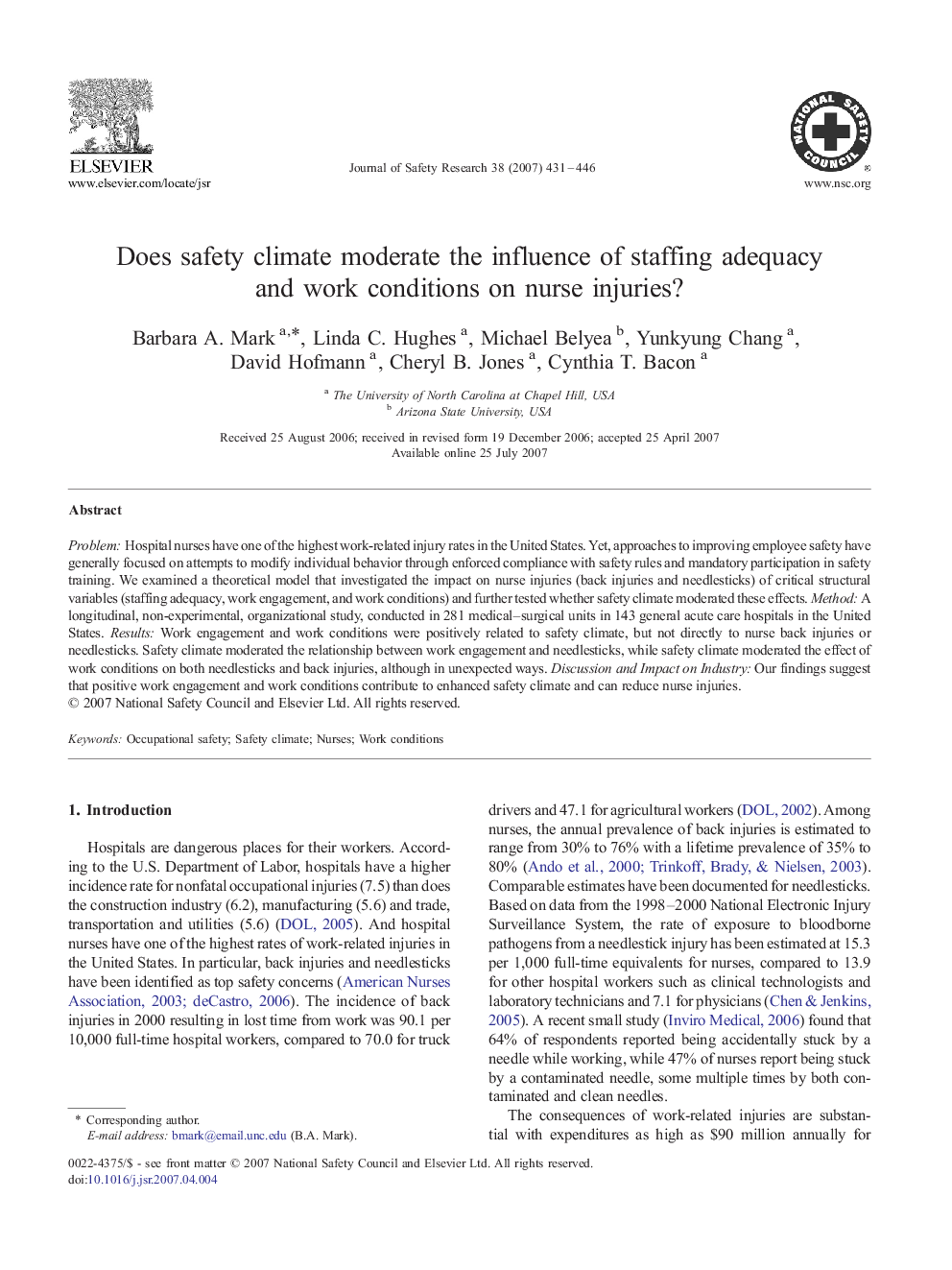| Article ID | Journal | Published Year | Pages | File Type |
|---|---|---|---|---|
| 587822 | Journal of Safety Research | 2007 | 16 Pages |
ProblemHospital nurses have one of the highest work-related injury rates in the United States. Yet, approaches to improving employee safety have generally focused on attempts to modify individual behavior through enforced compliance with safety rules and mandatory participation in safety training. We examined a theoretical model that investigated the impact on nurse injuries (back injuries and needlesticks) of critical structural variables (staffing adequacy, work engagement, and work conditions) and further tested whether safety climate moderated these effects.MethodA longitudinal, non-experimental, organizational study, conducted in 281 medical–surgical units in 143 general acute care hospitals in the United States.ResultsWork engagement and work conditions were positively related to safety climate, but not directly to nurse back injuries or needlesticks. Safety climate moderated the relationship between work engagement and needlesticks, while safety climate moderated the effect of work conditions on both needlesticks and back injuries, although in unexpected ways.Discussion and Impact on IndustryOur findings suggest that positive work engagement and work conditions contribute to enhanced safety climate and can reduce nurse injuries.
